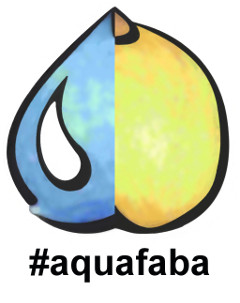Using aquafaba?
Consider donating to help fund a phytochemical analysis for the community!
$796.17
Feb 1 2016
Aquafaba History
Aquafaba was born out of a search to create a better vegan meringue. It was made possible by a few essential steps, each building on the discoveries before it. What follows is a short timeline of how the proverbial vegan egg was cracked:
-
The Status Quo
Bananas, apple sauce, prunes, pumpkin, flax, chia, nuts, and garbanzos have been long used as whole egg replacers in recipes. These work well as whole eggs in some recipes, but they don't work for delicate egg white recipes like meringues. Commercially available egg replacers like Ener-G, Bob's Red Mill, and Orgran have been available to home cooks for years, and obscure gastronomical foaming and gelling products also exist that allow you to mimic recipes like meringues with varying results.
-
A New Hope?Dec 2007
Some discussion about a person named Susie appeared briefly in the PPK forums, discussing her experimention with a promising new egg replacer and vegan meringues using a mystery ingredient. It has been speculated that it may have been based on mucilage from flax, bran, psyllium, or the one of the protein isolates. Her posts encouraged more people to think about alternative forms of egg replacers in the kitchen.
-
Chickpea Meringues - Hit or Miss?Oct 2010
Should I remove the foam when cooking chickpeas?
A simple question by a user on a cooking forum asks if anyone has tried using the foam from cooking chickpeas for any other uses. Years go by before a comment from Jeanne appears -- the world's first Aquafaba hit or miss report for a vegan meringue from made from chickpea aquafaba and sugar! -
Flaxseed GelMar 2011
Extracting the mucilage from flax (lignan) has been in cookbooks for over 30 years, but it wasn't until Miyoko Schinner shared her experience making meringue from the gel at artisanveganlife.com, that vegan meringue experimentation took a much needed turn. By having her discovery on her blog, it encouraged people to experiment, discuss, and contribute what they learned in the cooking and vegan forums. It was the first real publicly disclosed step away from the shackles of protein isolates, gums, and refined starches...
-
Soapwort Meringues?Aug 2012
In late 2012, a patent was filed for a novel meringue composition made from saponin-rich plants, suitable for vegans. The meringue was a simple one, based only on the saponin extract, sugar, and water. No starches, gums, or other ingredients were necessary, and it overcame some of the drawbacks of flax-based meringues, further encouraging the exploration of existing foods as possible alternatives to eggs and egg replacers.
-
The Chickpeas AwakenApr 2012
Using aquafaba as a flavor enhancer and thickener in breaded batters was accidentally discovered and shared in a Denver Post article.
-
Joël's Discovers the FoamDec 2014
While actively looking for egg substitutes, Joël Roessel, a ténor from France, discovered through a systematic investigation into vegetable foams, that liquid from red kidney beans and hearts of palm can be coerced into a foam in the same way as flax mucilage. He posted his results on his blog at revolutionvegetale.com, providing a key contribution to unlocking the secret of aquafaba.
-
An Interesting VideoFeb 2015
A few months after Joël's discovery. A pair of unrelated French foodists also show in a video, Le Défi FUDA chickpea challenge that you can also whip chickpea liquid into a foam with chocolate ganache to make a chilled dessert.
-
Goose's DiscoveryFeb 2015
Meanwhile, Goose Wohlt, a software engineer in the US, was experimenting with vegan egg whites and existing meringue techniques based on hydrocolloids. Hearing about the French video, he wondered how chickpea foamcould be used to make a stable vegan meringue. This led him to a surprising key discovery -- that with the right adjustments, chickpea liquid by itself can act as a direct egg white replacer. He showed that you can create perfect meringues with unrivaled taste and texture using normal egg white techniques. All you needed was just sugar and properly filtered and adjusted bean liquid. He posted his discovery to the popular vegan facebook page, What Fat Vegans Eat, as a simple meringue recipe with two ingredients, sparking a minor revolution of sorts.
This discovery was crucial, in part, because of its accessibility. It meant that anyone in the world could use the ubiquitous liquid from legumes as a general egg replacer through technique alone, not additional ingredients. There was no longer a need for protein isolates, gums or refined starches to achieve simple and delicate egg-like textures. This discovery removed all the previous and remaining obstacles in vegan meringue making and opened up a whole new exciting world of eggless recipes.
-
A community is born.Mar 2015
At the beginning of March, Goose shared his discovery in the popular facebook group, What Fat Vegans Eat, and a new group, Vegan Meringues - Hits and Misses! was created by Rebecca August to oversee its development by the vegan community.
Goose and the other admins nurtured discussion and experimentation in the group by sharing new discoveries as they unfolded, and encouraging others to do the same. By the end of March there was a fervent development community sharing preparation techniques, tips and tricks, and recipes for marshmallows, macarons, nougat, cakes, icing, mayo, cookies, ice cream, cheese, and standardized powders for commercial baking. Very quickly it became apparent that the community, the liquid and powders, and its philosophy all needed a name. The community settled on the new word that Goose coined, aquafaba, and the rest is, as they say, history.
